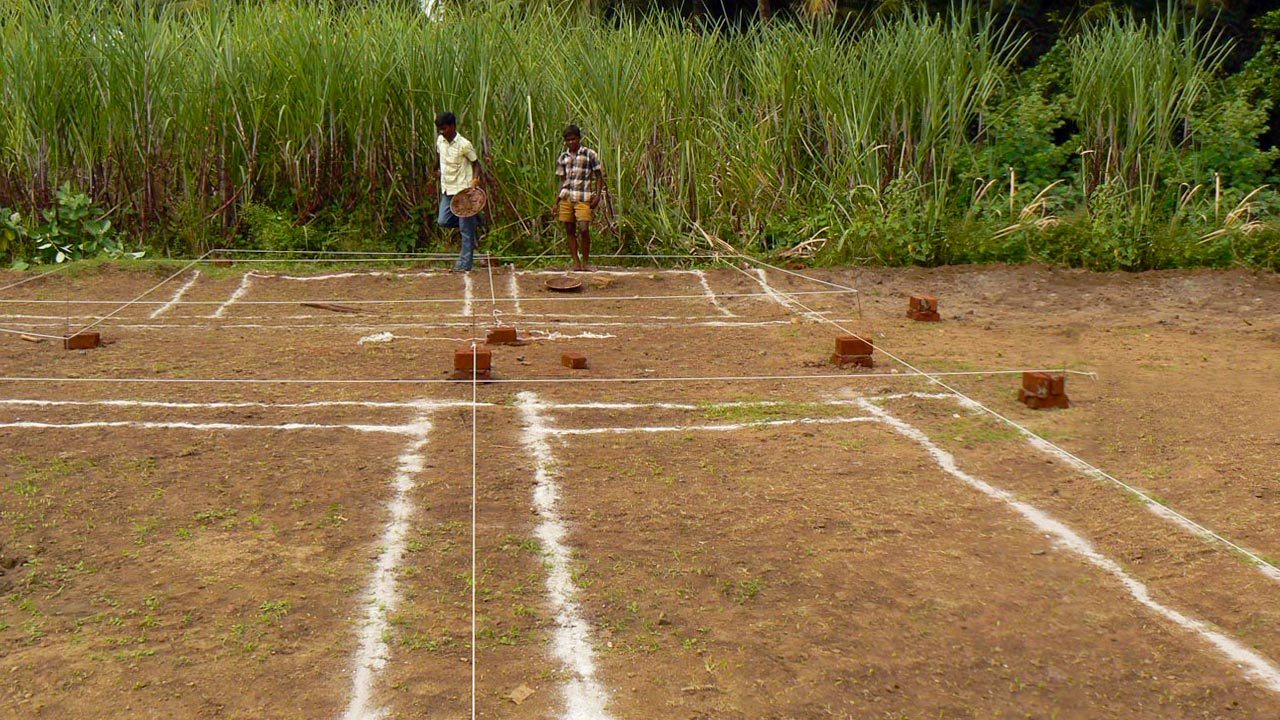Open for students and professionals of Structural Engineering, Earthquake Engineering and Geotechnical Engineering. Send us an email to request the full assignment sheet via this link.
Foundations are an expensive part of the building. In developing countries they easily represent 15% of the total building costs for two-storey buildings. For single-storey buildings it is relatively higher, generally around 25%. That is, when using local and traditional materials. A full concreted and steel reinforced strip foundation is mostly out of the question, as this would increase the percentage dramatically.
In the countries where we worked so far, mainly Sri Lanka, India, Nepal and Indonesia, we generally distinguish three shapes for the foundation. These are square or rectangular strips, stepped foundations, or tapered foundations.
People always prefer to purchase and find materials as close by as possible, since transport may double the price. Such as locally found mountain or river stones, put together with either cement mortar, mud mortar, or cement stabilized mud mortar.
Below ground level, we have seen and used several different techniques. In some cases the granite rocks were thrown in the trenches, then gradually being filled up with liquidized earth slurry, directly from the site. Or we used nicely dressed stones below ground level, with 10% cement stabilized earth mortar.
The part above ground level we always do with cement mortar, without any exception. This beam, including concrete tie beam on top, is raised at least 60 centimeter above the ground, to avoid problems during monsoon. One interesting question is, whether the connection between earth-mortared part below, and cement-mortared part above ground level, is sufficient and strong enough.
Other points of interest here are the influence of anchoring, and the role of the damp proof course on top of the foundation tie-beam.
Lastly, we are interested to find out more about traditional dry-stacked or mortar-less Roman and Greek foundations. They seem to be suitable for damping the seismic forces, and perhaps the top part is allowed to ‘slide’ over the foundation below?


